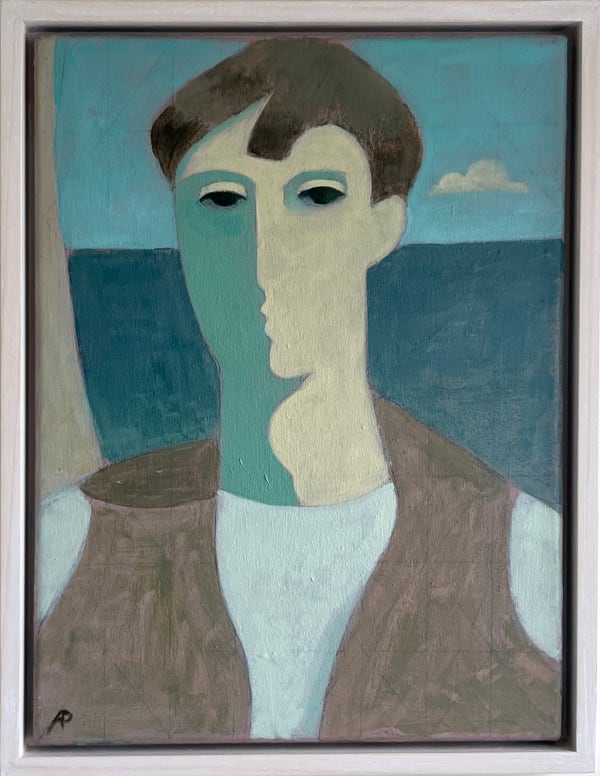During the last seven years Ann Payne has painted coastal scenes based on her memories of sailing and living near the water on the North Norfolk coast and Barton Broad.
Using sparse applications of paint and a limited colour pallet she was inspired by early twentieth century artists like the painter Milton Avery. Ann applied a subdued colour palette to describe expanses of sky and water, populated by white sails, using the simplest of components of a tightly composed figuration. Her paintings encourage a kind of revery, depicting an idealised seascape, the evocative views encompass the shallows just beyond the beach, where the sea is free of crowds, inflatable rigs and Flipflop shod bathers. The heat of the sun and the smell of the sea spray is palpable.
Painting has been a life-long passion for Ann Payne. The society portrait painter Sir Herbert James Gunn saw some of her early drawings and recommended that she enrol at the then independent art school Byam Shaw Art School, London.
The school was small, well-resourced, and based in Campden Hill London. There were tutors like the illustrator E.H. Shepard who drew the original illustrations for Winnie the Pooh. During the 50s the school had an academic approach to drawing and painting. It was considered an alternative to Slade School of Fine Art and Royal Academy. It was absorbed into Central Saint Martins twenty years ago.
She developed her own artistic vocabulary after finishing formal art education. While there is no evidence of a single direct influence on her work at this time, Ann looked at the work of other artists of the era and slightly earlier. She enjoyed the languid landscapes of the late nineteenth century Swiss painter Félix Vallotton (the subject of a large exhibition at Museum of Modern Art and Royal Academy recently in 2019), and a collection of English painters who had founded the Euston Road Group, like Victor Pasmore.
Her early career as a portrait painter enabled her to continue her creative direction, while also working as a runway model for several of London’s couturiers. It sounds like a charmed life, but London after the war was irrevocably altered and slow to recover. Even during the 50s artistic activity was intermittent and unless championed by a benefactor or patron, largely unsupported financially. Ann’s portraiture from this time showed she was a competent painter and capable of coordinating a succession of commissions. Her subjects were carefully composed, and each canvas maintained a measured observational approach.
The 60s opened a narrow chink for woman artists into an art world dominated by male artists that simply had not been available to them. Ann married and moved to rural Norfolk, to Barton Broad to raise a family. She continued to paint. Life in Norfolk lead to a new set of artistic influences much closer to home like Norfolk based Alfred Cohen, Brüer Tidman and Gwyneth Johnstone. Key figures like the landscape painter Edward Seago where part of her social circle.




